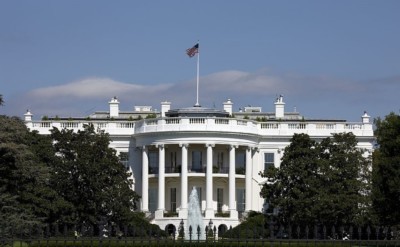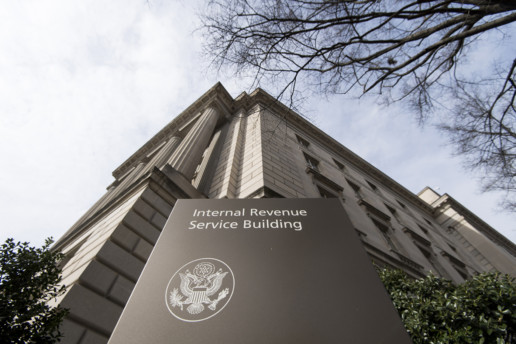Survey: What Employees Want Most from Their Workspaces
This year, employers across the country are expected to spend an average of $3.6 million on employer-sponsored wellness programs. Some of the benefits companies are investing in include onsite gyms, standing desks, meditation rooms and nursing hotlines. Continue reading this blog post to learn more about what employees want most out of their workspaces.
In an effort to support a healthier and more productive workforce, employers across the country are expected to spend an average of $3.6 million on wellness programs in 2019. Think onsite gyms. Standing desks. Meditation rooms. Nursing hotlines. These are just some of the benefits companies are investing in.
But is any of it paying off?
The results of a recent Harvard study suggest that wellness programs, offered by 80% of large U.S. companies, yield unimpressive results — and our findings mirror this. Future Workplace and View recently surveyed 1,601 workers across North America to figure out which wellness perks matter to them most and how these perks impact productivity.
Surprisingly, we found employees want the basics first: better air quality, access to natural light, and the ability to personalize their workspace. Half of the employees we surveyed said poor air quality makes them sleepier during the day, and more than a third reported up to an hour in lost productivity as a result. In fact, air quality and light were the biggest influencers of employee performance, happiness, and wellbeing, while fitness facilities and technology-based health tools were the most trivial.
Organizations have the power to make improvements in these areas, and they need to, both for their workers and themselves. A high-quality workplace — one with natural light, good ventilation, and comfortable temperatures — can reduce absenteeism up to four days a year. With unscheduled absenteeism costing companies an estimated $3,600 annually per hourly worker and $2,650 each year for salaried workers, this can have a major impact on your bottom line.
Other research finds that employees who are satisfied with their work environments are 16% more productive, 18% more likely to stay, and 30% more attracted to their company over competitors. Two-thirds of our survey respondents said that a workplace focused on their health and wellbeing would make them more likely to accept a new job or keep the job they have. This means that companies willing to adapt to an employee-centric view of workplace wellness will not only increase their productivity, they will also improve their ability to attract and retain talent.
To get started, here are three steps you can take to improve your work environments and the wellbeing of your employees:
1. Stop spending money on pointless office perks. A good rule of thumb is to never assume that you know what your employees want — but instead, find ways to ask them. If more employers did, they might put less emphasis on office perks that only a minority of employees will take advantage of (like an onsite gym), and more on changes in the workplace environment that impact all employees (like air quality and access to light).
The number one environmental factor cited in our survey was better air quality. Fifty-eight percent of respondents said that fresh, allergen-free air would improve their wellness. Fifty percent said they would work and feel better with some view of the outdoors, while one third said they would want the ability to adjust the temperature in their workspace. Only one in three survey respondents characterized their office temperature as ideal.
Noise distractions bothered more than a third of those surveyed, impacting their ability to concentrate. Employees said sounds like phones ringing, typing on keyboards, and distractions from coworkers all impacted their concentration.
Almost half of our respondents wanted to see their companies improve these environmental factors, and in many instances, more than they wanted to be offered office perks. The first step, then, is to take a look at where you are spending your money, and consider cutting expenses that aren’t worth the cost.
2. Personalize when possible. We’ve all gotten used to personalizing our outside-of-work lives. We binge the shows we want to watch and listen to the music we like to hear, even if our partners or friends have different preferences. We adjust our thermostats without having to get up off our couches, and dim our lights to our level of satisfaction.
Employees are beginning to expect these same privileges in the workplace. Our survey revealed that employees, by a margin of 42% to 28%, would rather be able to personalize their work environment than opt for unlimited vacation. Specifically, what employees want to personalize:
- Workspace temperature: Nearly half want an app that will let them set the temperature in their workspace.
- Overhead and desk lighting: One-third wants to control their overhead and desk lighting, as well as the levels of natural light streaming in.
- Noise levels: One-third would like to “soundscape” their workspace.
While these asks may sound exclusive to the personal offices of higher-ups — they’re not. Hewlett Packard Enterprise headquarters is just one example of a company that has managed to help employees control the noise level in an open floor plan. Their building was actually designed to manage ambient sound in order to reduce worker distractions. Some companies like Regeneron Pharmaceuticals, have gone a step further, allowing employees to control the amount of natural light streaming in through the glass of their office windows with a cell phone app.
But for organizations that don’t want to invest in a completely new building, there is a more organic route. Cisco, for example, has managed the acoustic levels in their space by creating a floor plan without assigned seating that includes neighborhoods of workspaces designed specifically for employees collaborating in person, remotely, or those who choose to work alone.
This same strategy applies to light or temperature. You can position employees who want a higher temperature and more light around the edge of your floor plan, and those who like it quieter and cooler in the core.
3. Create a holistic view of workplace wellness. When deciding what changes to make to your organization, remember that workplace wellness is not just about the physical health of your employees. It includes physical wellness, emotional wellness, and environmental wellness. To create a truly healthy work environment, you must take all three of these areas into consideration:
- Emotional wellness: Give employees access to natural light, and quiet rooms where they can comfortably focus on their work.
- Physical wellness: Provide people with healthy food options, and ergonomically designed work stations.
- Environmental wellness: Make sure your workspaces have adequate air quality, light, temperature, and proper acoustics.
Companies that adapt to a more holistic view of workplace wellness will soon realize no one department alone can solve the puzzle. Our study results, along with the results from the World Green Building Council report, push organizations to take a closer look at what changes they can make that will actually matter. My suggestion: consider how you can get back to the basics employees want, and invest in the core areas that will have the most impact.
Employers look to virtual services to curb rising health costs
Employers are looking for ways to stem the rising costs of healthcare and find ways to better engage employees. According to the National Business Group on Health, 64 percent of employers believe virtual care will play a significant role in healthcare delivery. Read this blog post to learn more about virtual services.
WASHINGTON — With the continued cost of healthcare benefits expected to increase by another 5%, topping $15,000 per employee, employers are looking for ways to stem the increase and better engage employees in holistic well-being.
One of those ways is through virtual care. The number of employers who believe virtual care will play a significant role in how healthcare is delivered in the future continues to grow, up to 64% going into 2020 from 52% in 2019, according to the National Business Group on Health’s annual healthcare strategy survey.
“Virtual care solutions bring healthcare to the consumer rather than the consumer to healthcare,” Brian Marcotte, president and CEO of NBGH said at a press briefing Tuesday. “They continue to gain momentum as employers seek different ways to deliver cost-effective, quality healthcare while improving access and the consumer experience. Of particular note is the growing interest among employers to offer virtual care for mental health as well as musculoskeletal conditions.”
The majority of respondents (51%) will offer more virtual care programs next year, according to the survey. Nearly all employers will offer telehealth for minor, acute services while 82% will offer virtual mental health services — a figure that’s expected to grow to 95% by 2022.
Virtual care for musculoskeletal management shows the greatest potential for growth, the study noted. While 23% of employers will offer musculoskeletal management virtual services next year, another 38% are considering it by 2022. Physical therapy is the best way to address musculoskeletal conditions and help avoid surgery, but it can be inconvenient and costly, said Ellen Kelsay, chief strategy officer at NBGH.
“Where we’ve seen a lot of development in areas of virtual solutions is to provide remote physical therapy treatments,” she said. “Employees can access treatment through their virtual app wherever it’s convenient for them.”
Regardless, employee utilization of virtual services still remains low. For example, while roughly 70% of large companies provide telemedicine coverage, only 3% of employees use it, according to prior NBGH data.
But many resources are out of sight and out of mind, Kelsay said. However, employers are focusing on offering high-touch concierge services to help workers better navigate the healthcare system.
Employers are reaching a point of saturation with the number of solutions that are available, but from the employee’s perspective, they just don’t know where to start, she added. “These concierge and navigator services really help point employees in the direction to the solution at the point in time they need it.”
In addition, the use of predictive analytics and claims data is also an opportunity to help employers get the right programs in front of employees in the moment, Marcotte added.
“Some of these engagement platforms are getting at personal messaging and predictive analytics. It’s not where we want it to be yet, but as that continues to get better, I think you’ll see utilization go up,” he said.
Employers shouldn’t fear expansion of Medicare
A new survey from the National Business Group on Health found that only 23 percent of large employers believe Medicare eligibility should drop to age 50. Read this article from Employee Benefits Advisor to learn more about the potential expansion of Medicare.
Like a significant chunk of American voters, a majority of large employers want to expand Medicare. Just not too much.
A new survey of 147 large employers from the National Business Group on Health found that 55% of them support a Medicare expansion that’s limited to older Americans. Only 23% think eligibility should drop to age 50, however, and 45% don’t think it should expand at all. A majority believe that a broader “Medicare for All” plan would increase health costs.
The same survey also highlights why employers should consider coming around on health reform that reduces their role in the system. The growth in health costs has outpaced inflation and wage growth for years, and the surveyed businesses expect it to rise 5% to $15,375 for each employee next year.
About 70% of those costs will fall on the companies, which plan to try everything from boosting virtual health services to investing in health concierges to rein them in, according to the survey.
History suggests that their best efforts might not amount to much.
Employer-sponsored insurance is America’s single largest source of health coverage. That’s mostly true because the IRS exempted employer health benefits from taxes in 1943, a move that created the federal government’s single biggest tax expenditure. Large companies derive some benefit from the current system because they can provide a significant tax-free benefit that helps them compete for talent and pay people less. But it comes with significant drawbacks. Employers have to devote substantial resources to providing healthcare and controlling costs. Many of them have no particular expertise or advantage in doing so.
The results are mixed. Yes, individuals with private insurance are generally satisfied with the quality of their coverage. They’re not nearly as happy about the cost as deductibles rise. The U.S. pays more than any other developed country for healthcare and medicines and receives worse results on a variety of metrics.
Employers pay particularly high prices and spend heavily on plans that have higher overhead than public alternatives. A recent RAND study found that employer-sponsored plans paid hospitals at 241% of Medicare rates in 2017. Employers are already effectively subsidizing public programs, not to mention the profitability of insurers, health care providers and drugmakers.
It’s not entirely their fault. The American system inherently fragments negotiating power, which gives providers a significant advantage and makes it difficult for even the largest employers to get a good deal. Turning a larger piece of healthcare over to the government would free companies to focus more time and resources on their actual business instead of on navigating the world’s most expensive and convoluted healthcare market.
Big businesses most likely fear big Medicare expansion in large part because it would lead to a significant tax increase. But looking at any tax increase as an enemy is a mistake. Those taxes represent a trade-off; they would replace some or all of the billions of dollars that employers are currently spending on care. Depending on what taxes are imposed and whether the public plan is able to control costs better than the current system — and it could hardly do worse — many employers could come out ahead.
There are a lot of unknowns when it comes to Medicare for All and plans that move the country in that direction. Employers are right to be skeptical until they know more, but the results could well shake out in their favor, and they shouldn’t be so quick to discount the approach.
SOURCE: Nisen, M. (15 August 2019)"Employers shouldn’t fear expansion of Medicare" (Web Blog Post). Retrieved from https://www.employeebenefitadviser.com/articles/employers-shouldnt-fear-expansion-of-medicare
Cadillac Tax May Finally Be Running Out of Gas
The Cadillac tax - a 40 percent tax on the most generous employer-provided health insurance plans - may be about to change. The Cadillac tax was supposed to take effect in 2018 but has been delayed twice and recently, the House voted to repeal this tax entirely. Read this blog post to learn more about this potential change.
The politics of healthcare are changing. And one of the most controversial parts of the Affordable Care Act — the so-called Cadillac tax — may be about to change with it.
The Cadillac tax is a 40% tax on the most generous employer-provided health insurance plans — those that cost more than $11,200 for an individual policy or $30,150 for family coverage. It was supposed to take effect in 2018, but Congress has delayed it twice. And the House recently voted overwhelmingly — 419-6 — to repeal it entirely. A Senate companion bill has 61 co-sponsors — more than enough to ensure passage.
The tax was always an unpopular and controversial part of the 2010 health law because the expectation was that employers would cut benefits to avoid paying the tax. But ACA backers said it was necessary to help pay for the law’s nearly $1 trillion cost and help stem the use of what was seen as potentially unnecessary care. In the ensuing years, however, public opinion has shifted decisively, as premiums and out-of-pocket costs have soared. Now the biggest health issue is not how much the nation is spending on healthcare, but how much individuals are.
“Voters deeply care about healthcare still,” said Heather Meade, a spokeswoman for the Alliance to Fight the 40, a coalition of business, labor and patient advocacy groups urging repeal of the Cadillac tax. “But it is about their own personal cost and their ability to afford healthcare.”
Stan Dorn, a senior fellow at Families USA, recently wrote in the journal Health Affairs that the backers of the ACA thought the tax was necessary to sell the law to people concerned about its price tag and to cut back on overly generous benefits that could drive up health costs. But transitions in healthcare, such as the increasing use of high-deductible plans, make that argument less compelling, he said.
“Nowadays, few observers would argue that [employer-sponsored insurance] gives most workers and their families’ excessive coverage,” he wrote.
The possibility of the tax has been “casting a statutory shadow over 180 million Americans’ health plans, which we know, from HR administrators and employee reps in real life, has added pressure to shift coverage into higher-deductible plans, which falls on the backs of working Americans,” said Rep. Joe Courtney (D-Conn.).
Support or opposition to the Cadillac tax has never broken down cleanly along party lines. For example, economists from across the ideological spectrum supported its inclusion in the ACA, and many continue to endorse it.
“If people have insurance that pays for too much, they don’t have enough skin in the game. They may be too quick to seek professional medical care. They may too easily accede when physicians recommend superfluous tests and treatments,” wrote N. Gregory Mankiw, an economics adviser in the George W. Bush administration, and Lawrence Summers, an economic aide to President Barack Obama, in a 2015 column. “Such behavior can drive national health spending beyond what is necessary and desirable.”
At the same time, however, the tax has been bitterly opposed by organized labor, a key constituency for Democrats. “Many unions have been unable to bargain for higher wages, but they have been taking more generous health benefits instead for years,” said Robert Blendon, a professor at the Harvard T.H. Chan School of Public Health who studies health and public opinion.
Now, unions say, those benefits are disappearing, with premiums, deductibles and other cost sharing rising as employers scramble to stay under the threshold for the impending tax. “Employers are using the tax as justification to shift more costs to employees, raising costs for workers and their families,” said a letter to members of Congress from the Service Employees International Union.
Deductibles have been rising for a number of reasons, the possibility of the tax among them. According to a 2018 survey by the federal government’s National Center for Health Statistics, nearly half of Americans under age 65 (47%) had high-deductible health plans. Those are plans that have deductibles of at least $1,350 for individual coverage or $2,700 for family coverage.
It’s not yet clear if the Senate will take up the House-passed bill, or one like it.
The senators leading the charge in that chamber — Mike Rounds (R-S.D.) and Martin Heinrich (D-N.M.) — have already written to Senate Majority Leader Mitch McConnell to urge him to bring the bill to the floor following the House’s overwhelming vote.
“At a time when healthcare expenses continue to go up, and Congress remains divided on many issues, the repeal of the Cadillac tax is something that has true bipartisan support,” the letter said.
Still, there is opposition. A letter to the Senate on July 29 from economists and other health experts argued that the tax “will help curtail the growth of private health insurance premiums by encouraging employers to limit the costs of plans to the tax-free amount.” The letter also pointed out that repealing the tax “would add directly to the federal budget deficit, an estimated $197 billion over the next decade, according to the Joint Committee on Taxation.”
Still, if McConnell does bring the bill up, there is little doubt it would pass, despite support for the tax from economists and budget watchdogs.
“When employers and employees agree in lockstep that they hate it, there are not enough economists out there to outvote them,” said former Senate GOP aide Rodney Whitlock, now a healthcare consultant.
Harvard professor Blendon agrees. “Voters are saying, ‘We want you to lower our health costs,’” he said. The Cadillac tax, at least for those affected by it, would do the opposite.
SOURCE: Rovner, J. ( 19 August, 2019) "Cadillac tax may finally be running out of gas" (Web Blog Post). Retrieved from https://www.employeebenefitadviser.com/articles/obamacare-excise-tax-may-be-at-an-end
Association Health Plans & Their Benefits
Many individuals do not understand various insurance terms and the plans available to them. Most employers have a hard time trying to find the best and the most affordable coverage for their employees. It is important you find an insurance company or agent that can break it down for you to get the best coverage.

We asked our founding partner and CEO, Jamie Charlton, to shed some light on Association Health Plans (AHPs) and also give their advantages and disadvantages.
What is an AHP, and How Does it Work?
According to Charlton, AHP or Association Health Plans are a conglomeration of smaller groups that come under the guise of a larger umbrella to leverage bulk buying power. They might not be small companies per se, but are those that come together under one industry or from the same geographic area to strengthen their negotiating power. They can be a group of manufacturers, printers or self-employed individuals from the same jurisdiction. An example of such an association is the Chamber Alliance.
Ideally, small businesses, including self-employed individuals in the same industry or geographic location, can merge to form larger groups to get healthcare plans as one large group. Coalitions are more or less the same as these associations, only that coalitions are groups made up of non-profit institutions such as schools. Associations are mostly businesses or organizations aimed at making profits.
AHP Expansion
United States (US) President, Donald Trump, issued an executive order to promote healthcare coverage in the US on October 12, 2017. The order aims at expanding access to small businesses to get the same competitive advantage as large corporations when purchasing health insurance. This order was meant to provide more affordable health insurance plans to as many individuals as possible. These individuals include farmers, wage earners and employees of any small business in the US.
Charlton has a slightly different view of this expansion. Though it has helped a few individuals, the expansion does not present any advantage as the rates keep going higher with age. He explained, “AHPs don’t have an advantage in the long run, unless they have a long-term sponsor.” AHPs have always been in existence, and the expansion is just political rhetoric that will give the plans some credibility.
Advantages of an AHP to Smaller Employers
There are some advantages that come with AHPs, both to the employer and the employees. These include:
- Negotiating power
- Spreading the risk
- Maintaining lower rates instead of lumping them into unverified age groups
- No charging different premiums to employees based on health status
- No charging different rates to employers based on the health status of their employees
- Healthy, younger groups will be fully underwritten
- Self-employed individuals with a few employees and those with no employees are also eligible
- Will not cherry pick or discriminate based on the status of an applicant pre-existing or previous health condition.
There are also some disadvantages. They include:
- Many of these plans might not allow single person groups.
- An individual must be a bona-fide member of a group and pay a membership fee.

The Role Saxon Plays in Helping the Employer
Saxon prides itself as a top provider of AHPs. The company has experts with knowledge of how this system works. Writing these plans for the last four years, Saxon can offer stable rates and consistent, professional assistance.
For more information regarding employee benefits and competitive benefits packages that fit your business strategy, you can contact Jamie Charlton at 513-573-0129 or via email at jcharlton@gosaxon.com.
Giving onsite clinics an engagement booster shot
In efforts to reduce healthcare spend and increase the population's health, many employers are offering a variety of employee wellness services and programs. Read this blog post to learn more about increasing engagement in onsite clinics.
Employers of all sizes and industries are currently offering a variety of wellness services that include preventive, acute, primary, chronic disease and occupational healthcare programs at or near the worksite. These benefits are intended to reduce healthcare spend, increase the population’s health and productivity and positively impact recruitment and retention efforts.
In fact, according to two 2018 studies by the National Association of Worksite Health Centers, more than one-third of all employers and close to 50% of large firms are now operating worksite clinics. But just because employers offer such benefits doesn’t mean employees will take advantage of these services, even when they’re free.
But many employers are frustrated to find that 20% or less of the targeted or covered workers utilizes their programs — with millions of dollars in benefits wasted.
Failure can be caused by lack of promotion, inadequate incentives, poor communications or providers who don’t fit into the culture of the employer. However, one of the most significant problems than can undermine a benefit program, especially a worksite clinic, is when employees don’t trust that their personal health data will be confidential and fear it will be used for employment decisions.
Employers who achieve high benefit utilization build the foundation for success by informing their workforce, prior to a benefit or clinic being available and on an ongoing basis, of the many federal and state confidentiality and privacy laws that dictate who can receive personal and occupational health information and the limitations placed on employers.
Communications, posters, presentations and other marketing vehicles must assure employees that the employer will only see aggregate, not personal data from the offered benefit programs. Emphasize that the program’s or clinic’s medical providers will be the only individuals dealing with this information, and that by law they are legally and ethically obligated to keep this confidential.
Understanding the culture and labor-management dynamics of an organization are also critical to building trust. To increase use, it’s often best to market the program or facility under a new brand name, such as “The Healthy Life” or use the name of the provider who manages the program or clinic, rather than the employer’s name.
The physical design or location of a benefit program or clinic also needs to be kept in mind. Clinical or counseling activities should be separate from business offices or fitness centers where a person taking advantage of the benefit could be seen by their peers, managers and supervisors.
Achieving engagement in a health benefit program or clinic is key to its success, as well as obtaining the resources and support of senior management for its expansion and continuance. The design, marketing and location of benefit programs need to be well-planned so the workforce is confident that the confidentiality of their patient records will be maintained and not used for employment decisions.
SOURCE: Boress, L. (9 July 2019) "Giving onsite clinics an engagement booster shot" (Web Blog Post). Retrieved from https://www.benefitnews.com/opinion/how-to-increase-employee-engagement-in-healthcare-benefits
PCORI Fee Is Due by July 31 for Self-Insured Health Plans
The annual fee for the federal Patient-Centered Outcomes Research Institute (PCORI) is due July 31, 2019. Plans with terms ending after September 30, 2012, and before October 1, 2019, are required to pay an annual PCORI fee. Read this article from SHRM to learn more.
An earlier version of this article was posted on November 6, 2018
The next annual fee that sponsors of self-insured health plans must pay to fund the federal Patient-Centered Outcomes Research Institute (PCORI) is due July 31, 2019.
The Affordable Care Act mandated payment of an annual PCORI fee by plans with terms ending after Sept. 30, 2012, and before Oct. 1, 2019, to provide initial funding for the Washington, D.C.-based institute, which funds research on the comparative effectiveness of medical treatments. Self-insured plans pay the fee themselves, while insurance companies pay the fee for fully insured plans but may pass the cost along to employers through higher premiums.
The IRS treats the fee like an excise tax.
The PCORI fee is due by the July 31 following the last day of the plan year. The final PCORI payment for sponsors of 2018 calendar-year plans is due by July 31, 2019. The final PCORI fee for plan years ending from Jan. 1, 2019 to Sept. 30, 2019, will be due by July 31, 2020.
In Notice 2018-85, the IRS set the amount used to calculate the PCORI fee at $2.45 per person covered by plan years ending Oct. 1, 2018, through Sept. 30, 2019.
The chart below shows the fees to be paid in 2019, which are slightly higher than the fees owed in 2018. The per-enrollee amount depends on when the plan year ended, as in previous years.
| Fee per Plan Enrollee for Payment Due July 31, 2019 |
|
| Plan years ending from Oct. 1, 2018, through Sept. 30, 2019. | $2.45 |
| Fee per Plan Enrollee for Payment Due July 31, 2018 |
|
| Plan years ending from Oct. 1, 2017, through Dec. 31, 2017, including calendar-year plans. | $2.39 |
| Plan years ending from Jan. 1, 2017, through Sept. 30, 2017 | $2.26 |
| Source: IRS. |
Nearing the End
The PCORI fee will not be assessed for plan years ending after Sept. 30, 2019, "which means that for a calendar-year plan, the last year for assessment is the 2018 calendar year," wrote Richard Stover, a New York City-based principal at HR consultancy Buck Global, and Amy Dunn, a principal in Buck's Knowledge Resource Center.
For noncalendar-year plans that end between Jan. 1, 2019 and Sept. 30, 3019, however, there will be one last PCORI payment due by July 31, 2020.
"There will not be any PCORI fee for plan years that end on October 1, 2019 or later," according to 360 Corporate Benefit Advisors.
The PCORI fee was first assessed for plan years ending after Sept. 30, 2012. The fee for the first plan year was $1 per plan enrollee, which increased to $2 per enrollee in the second year and was then indexed in subsequent years based on the increase in national health expenditures.
FSAs and HRAs
In addition to self-insured medical plans, health flexible spending accounts (health FSAs) and health reimbursement arrangements (HRAs) that fail to qualify as “excepted benefits” would be required to pay the per-enrollee fee, wrote Gary Kushner, president and CEO of Kushner & Co., a benefits advisory firm based in Portage, Mich.
As set forth in the Department of Labor's Technical Release 2013-03:
- A health FSA is an excepted benefit if the employer does not contribute more than $500 a year to any employee accounts and also offers a group health plan with nonexcepted benefits.
- An HRA is an excepted benefit if it only reimburses for limited-scope dental and vision expenses or long-term care coverage and is not integrated with a group health plan.
Kushner explained that:
- If the employer sponsors a fully insured group health plan for which the insurance carrier is filing and paying the PCORI fee and the same employer sponsors an employer-funded health care FSA or an HRA not exempted from the fee, employers should only count the employees participating in the FSA or HRA, and not spouses or dependents, when paying the fee.
- If the employer sponsors a self-funded group health plan, then the employer needs to file the form and pay the PCORI fee only on the number of individuals enrolled in the group health plan, and not in the employer-funded health care FSA or HRA.
An employer that sponsors a self-insured HRA along with a fully insured medical plan "must pay PCORI fees based on the number of employees (dependents are not included in this count) participating in the HRA, while the insurer pays the PCORI fee on the individuals (including dependents) covered under the insured plan," wrote Mark Holloway, senior vice president and director of compliance services at Lockton Companies, a benefits broker and services firm based in Kansas City, Mo. Where an employer maintains an HRA along with a self-funded medical plan and both have the same plan year, "the employer pays a single PCORI fee based on the number of covered lives in the self-funded medical plan (the HRA is disregarded)."
Paying PCORI Fees
Self-insured employers are responsible for submitting the fee and accompanying paperwork to the IRS, as "third-party reporting and payment of the fee is not permitted for self-funded plans," Holloway noted.
For the coming year, self-insured health plan sponsors should use Form 720 for the second calendar quarter to report and pay the PCORI fee by July 31, 2019.
"On p. 2 of Form 720, under Part II, the employer needs to designate the average number of covered lives under its applicable self-insured plan," Holloway explained. The number of covered lives will be multiplied by $2.45 for plan years ending on or after Oct. 1, 2018, to determine the total fee owed to the IRS next July.
To calculate "the average number of lives covered" or plan enrollees, employers should use one of three methods listed on pages 8 and 9 of the Instructions for Form 720. A white paper by Keller Benefit Services describes these methods in greater detail.
Although the fee is paid annually, employers should indicate on the Payment Voucher (720-V), located at the end of Form 720, that the tax period for the fee is the second quarter of the year. "Failure to properly designate 'second quarter' on the voucher will result in the IRS's software generating a tardy filing notice, with all the incumbent aggravation on the employer to correct the matter with the IRS," Holloway warned.
A few other points to keep in mind: "The U.S. Department of Labor believes the fee cannot be paid from plan assets," he said. In other words, for self-insured health plans, "the PCORI fee must be paid by the plan sponsor. It is not a permissible expense of a self-funded plan and cannot be paid in whole or part by participant contributions."
In addition, PCORI fees "should not be included in the plan's cost when computing the plan's COBRA premium," Holloway noted. But "the IRS has indicated the fee is, however, a tax-deductible business expense for employers with self-funded plans," he added, citing a May 2013 IRS memorandum.
SOURCE: Miller, S. (2 July 2019) "PCORI Fee Is Due by July 31 for Self-Insured Health Plans" (Web Blog Post). Retrieved from https://www.shrm.org/resourcesandtools/hr-topics/benefits/pages/2019-pcori-fees.aspx
Federal Appeals Court Takes Up Case That Could Upend U.S. Health System
A federal appeals court in New Orleans has taken up a case against the Affordable Care Act. If the lower court's ruling in the case, Texas v. United States, is upheld, it has the potential to shake the nation's health care system. Read this article to learn more about this case.
The fate of the Affordable Care Act is again on the line Tuesday, as a federal appeals court in New Orleans takes up a case in which a lower court judge has already ruled the massive health law unconstitutional.
If the lower court ruling is ultimately upheld, the case, Texas v. United States, has the potential to shake the nation’s entire health care system to its core. Not only would such a decision immediately affect the estimated 20 million people who get their health coverage through programs created under the law, ending the ACA would also create chaos in other parts of the health care system that were directly or indirectly changed under the law’s multitude of provisions, such as calorie counts on menus, a pathway for approval of generic copies of expensive biologic drugs and, perhaps most important politically, protections for people with preexisting conditions.
“Billions of dollars of private and public investment — impacting every corner of the American health system — have been made based on the existence of the ACA,” said a friend-of-the-court brief filed by a bipartisan group of economists and other health policy experts to the 5th Circuit Court of Appeals. Upholding the lower court’s ruling, the scholars added, “would upend all of those settled expectations and throw healthcare markets, and 1/5 of the economy, into chaos.”
Here are five important things to know about the case:
It was prompted by the tax bill Republicans passed in 2017.
The big tax cut bill passed by the GOP Congress in December 2017 eliminated the penalty included in the ACA for failure to maintain health insurance coverage. The lawsuit was filed in February 2018 by a group of Republican attorneys general and two governors. They argued that since the Supreme Court had upheld the ACA in 2012 specifically because it was a valid exercise of Congress’ taxing power, taking the tax away makes the entire rest of the law unconstitutional.
Last December, Judge Reed C. O’Connor agreed with the Republicans. “In some ways the question before the court involves the intent of both the 2010 and 2017 Congresses,” O’Connor wrote in his decision. “The former enacted the ACA. The latter sawed off the last leg it stood on.”
State and federal Democrats are defending the law.
Arguing that the rest of the law remains valid is a group of Democratic attorneys general, led by California’s Xavier Becerra.
“Our argument is simple,” said Becerra in a statement last Friday. “The health and wellbeing of nearly every American is at risk. Healthcare can mean the difference between life and death, financial stability and bankruptcy. Our families’ wellbeing should not be treated as a political football.”
The Democratic-led House of Representatives has also been granted “intervenor” status in the case.
The Trump administration has taken several positions on the lawsuit.
The defendant in the case is technically the Trump administration. Traditionally, an administration, even one that did not work to pass the law in question, defends existing law in court.
Not this time. And it is still unclear exactly what the administration’s position is on the lawsuit. “They have changed their position several times,” Sen. Chris Murphy (D-Conn.) told reporters on a conference call Monday.
When the administration first weighed in on the case, in June 2018, it said it believed that without the tax penalty only the provisions most closely connected to that penalty — including requiring insurers to sell policies to people with preexisting conditions — should be struck down. The rest of the law should stay, the Justice Department argued.
After O’Connor’s ruling, however, the administration changed its mind. In March, a spokeswoman for the Justice Department said it had “determined that the district court’s comprehensive opinion came to the correct conclusion and will support it on appeal.”
Now it appears the administration is shifting its opinion again. In a filing with the court late last week, Justice Department attorneys argued that perhaps the health law should be invalidated only in the GOP states that are suing, rather than all states. It is unclear how that would work.
Legal scholars — including those who oppose the ACA — consider the case dubious.
In a brief filed with the appeals court, legal scholars from both sides of the fight over the ACA agreed that the lawsuit’s underlying claim makes no sense.
In passing the tax bill that eliminated the ACA’s tax penalty but nothing else, Congress “made the judgment that it wanted the insurance reforms and the rest of the ACA to remain even in the absence of an enforceable insurance mandate,” wrote law professors Jonathan Adler, Nicholas Bagley, Abbe Gluck and Ilya Somin. Bagley and Gluck are supporters of the ACA; Adler and Somin have argued against it in earlier suits. “Congress itself — not a court — eliminated enforcement of the provision in question and left the rest of the statute standing. So congressional intent is clear.”
It could end up in front of the Supreme Court right in the middle of the 2020 election.
Depending on what happens at the appeals court level, the health law could be back in front of the Supreme Court — which has upheld the health law on other grounds in 2012 and 2015 — and land there in the middle of next year’s presidential campaign.
Democrats are already sharpening their rhetoric for that possibility.
“President Trump and Republicans are playing a very dangerous game with people’s lives,” Senate Minority Leader Chuck Schumer told reporters on a conference call Monday.
Murphy said he is most concerned that if the lower court ruling is upheld and the health law struck down, Republicans “won’t be able to come up with a plan” to put the health care system back together.
“Republicans tried to come up with a replacement plan for 10 years, and they couldn’t do it,” he said.
SOURCE: Rovner, J. (9 July 2019) "Federal Appeals Court Takes Up Case That Could Upend U.S. Health System" (Web Blog Post). Retrieved from https://khn.org/news/federal-appeals-court-takes-up-case-that-could-upend-u-s-health-system/
Creating an ‘urgent care first’ mindset for employee benefits
With urgent cares continuing to pop up everywhere, it’s important to guide your employees in adopting an "urgent care first" mentality. Continue reading this blog post to learn more.
Urgent care centers are popping up everywhere, which means getting quick healthcare is easier and more convenient for patients. But these centers could also help employers minimize expensive emergency room claims. That’s why it’s important to guide employees to adopt an “urgent care first” mentality.
The concept of urgent care has been around since the 1970s, but rising healthcare costs, especially for ER care, have spurred an increase in centers across the U.S. over the last decade. In fact, from 2014 through June 2017, the number of urgent care centers rose by nearly 20%.
Urgent care centers provide care for health problems that aren’t life-threatening, but can’t wait for an appointment with a primary care provider. No one wants to suffer with a sore throat all weekend. Many urgent care centers are staffed with doctors and nurses, and provide more advanced capabilities than what’s typically available at a primary care doctor’s office. For example, some urgent care centers give stitches, provide X-rays and even MRIs.
Patients can also get treatment at urgent care for conditions they’d typically see a primary care doctor for, such as the flu or a fever, mild to moderate asthma, skin rashes, sprains and strains, and a severe sore throat or cough — illnesses that produce unnecessary high claims if treated in an ER.
Still, when a severe sore throat and high fever strike on a weekend and the doctor’s office is closed, employees may gravitate to the ER because they’re sick and need help right now. That’s where the urgent care first mindset becomes good medicine. It typically costs the employer (and often the employee) far less if that sore throat is treated in an urgent care facility.
The high cost of ER care is enough to make anyone run a high temp. From 2009 to 2016 (the most recent data available), the average amount that hospitals billed insurance carriers for an emergency room visit more than doubled, from $600 to $1,322. By contrast, urgent care typically costs about $150 per visit. Members often pay a lower copay for urgent care visits, too.
The urgent care first mindset is starting to take hold. New data analysis from Aetna shows that as urgent care centers began to proliferate, ER visits for minor health issues dropped 36%, while the use of urgent care and other non-emergency health settings increased 140%.
However, the same study shows that plans only saw a decrease in ER visits if there were several urgent care centers in the geographic region where their employees lived. Awareness is key.
Fostering an urgent care first mentality
Employers can’t just include urgent care in a benefits plan and expect employees to use it. They need to design the plan to encourage use and follow up with plenty of education.
Education about the benefits of primary care versus urgent care versus the ER should take place during open enrollment and throughout the plan year so members understand the medical necessity and financial implications of each option. Including the closest urgent care centers to employees, as well as a list of services they provide, can help encourage them to adopt an urgent care first mentality.
A word of caution: not every nearby urgent care center is actually in-network. It literally pays for employees to keep a list of nearby in-network centers handy when that inevitable weekend sore throat strikes.
Reminders about urgent care before spring allergies, summer vacations, fall school physicals and flu season can also help encourage their use.
The too-low ER copay
Plan design is another important piece of the puzzle to help steer employees to the right level of care for their needs. It’s not that unusual to see a $100 copay for an emergency department visit. While no one wants to discourage ER visits for true emergencies, it makes sense to adjust the plan design to encourage primary and urgent care visits instead. That may mean a $20 copay for primary care, a $40 copay for urgent care and a $200 to $250 copay for ER visits — which is waived if the plan participant is admitted to the hospital.
For high-deductible health plans paired with a health savings account, the savings can be even more drastic; patients may pay $200 for an urgent care visit versus $1,200 for an ER visit.
The combination of education and plan design can help curb unnecessary ER visits, which could help employers control healthcare increases from plan year to plan year. For health issues that crop up during off hours, the urgent care first mindset is good for both employers and employees, who will ultimately save time and money.
SOURCE: O'Conner, P. (5 July 2019) "Creating an ‘urgent care first’ mindset for employee benefits" (Web Blog Post). Retrieved from https://www.benefitnews.com/opinion/creating-an-urgent-care-first-mindset-for-employees
It’s time to incorporate cancer screenings into your wellness program
The National Cancer Institute reported that newer FDA-approved novel immunotherapies have shown to be beneficial responses to colorectal cancer but can cost upwards of $400,000 per year. This post from Employee Benefit News discusses incorporating cancer screenings into corporate wellness programs.
Scott Wilson, an employee at brewing company Molson Coors in Denver, was diagnosed with stage four metastatic colorectal cancer in 2016 — a disease that would cost him upward of $1.3 million to date, with significant dollars paid out for non-covered medical expenses.
As a consequence of a later-stage diagnosis, colon and liver resections were necessary coupled with aggressive treatment using chemotherapy and Vectobix — a newer and costly immunotherapy that is priced at $8,000 per week. On average, more than 40,000 people undergo treatment for metastatic colorectal cancer each year and the cost of treatment varies depending on the stage at diagnosis, treatment response and plan.
The availability of newer FDA-approved novel immunotherapies have shown to be beneficial responses to this deadly cancer, but at staggering costs that can be upward of $400,000 per year at market introduction, according to the National Cancer Institute.
Today, about 60% of diagnosed colorectal cases are discovered in later stage disease due to under-screening — a third of the eligible population have never been screened or are not up-to-date with screening guidelines. As a result, about 140,000 Americans are diagnosed with any stage of colorectal cancer and about 51,000 people die of this cancer annually. A recent study examined 1,750 colorectal cancer deaths from 2006 to 2012 in the Kaiser Permanente Health System — 76% of those deaths occurred in patients who were never screened or were not up-to-date with screening.
Cancer screening in the workplace
Last year, the American Cancer Society lowered the colorectal cancer screening age to 45 based on the rising rates of cancer trending in younger age populations — other cancer organization’s recommendations remain at age 50. Employers are in a unique position to reinforce and support these national recommendations among their employees.
Employees between 50 and 65 years of age have the lowest screening rates for colorectal cancer screening, and are typically covered by employer-sponsored health plans. Employers find offering cancer screening programs that reward participation via health and wellness programs are reducing disease risk and financial burdens for themselves and their employees.
The costs for treatment of cancer are more than double the rate of other healthcare expenses. For an employer, the impact of a late versus an early stage diagnosis is significant. National expenditures for treatment and care of colorectal cancer are second only to breast cancer.
In people age 65 and younger, the U.S spends in excess of $7.4 billion for treatment of colorectal cancer. For those employees diagnosed with any stage of colorectal cancer, a large percentage of costs are paid out by company-sponsored health plans despite the implementation of high-deductible health plans.
It would seem prudent to institute a screening initiative to find cancer early in your employee populations, or prevent it altogether by supporting screening for preventable cancers. Employees who test positive are referred by their physician for diagnostic colonoscopy to determine if colorectal cancer is present or to remove precancerous polyps or lesions. The intangible costs associated with cancer is the time off of work for treatment and lost productivity.
Most companies administer a wellness program for employees and families, like Molson Coors, but only about 20% offer colorectal cancer screening. Incorporating a blood test as a preventive cancer screening strategy alongside workplace wellness programs can get employees up-to-date with screening recommendations. Employers who are interested in instituting a colorectal cancer screening program in the office should consider the following suggestions.
Incorporate CRC screening into wellness programs. Screenings provide the opportunity to identify risks early and can bridge the gap between doctor office visits for employees who do not see their providers on a regular or annual basis.
Partner with third-party administrators. Third party administration services can ensure HIPAA regulations are followed for privacy. TPAs also will arrange for the delivery of results.
Create communications campaigns. Target your messaging to those eligible for colorectal cancer screening and make sure to cite the correct statistics for benefits and risk.
Reward participation. Participation is shown to increase when incentives are provided to reward participation. Decide what incentives work for your employees – PTO, financial rewards, gym memberships, coupons or gift cards.
Follow up. Plan for next steps based on employee screenings. Results should be provided in a timely manner to enable employees.
Wilson, the Molson Coors employee, remains in remission for nearly 20 months. He’s since devoted his time to advocate for access to colorectal cancer screening, especially in the workplace. Wilson recently joined the Colorectal Cancer Alliance organization as a board member, a non-profit dedicated to reducing the incidence of colorectal cancer through their many efforts aimed at prevention and awareness. He also wrote a book, “Through the Window: A Photographic Tale of Cancer Recovery” for the alliance. Wilson has been an advocate for the vital need for employee access and employer support for CRC screening in the workplace.
SOURCE: Childers, P. (27 June 2019) "It’s time to incorporate cancer screenings into your wellness program" (Web Blog Post). Retrieved from https://www.benefitnews.com/opinion/add-cancer-screenings-to-wellness-programs









